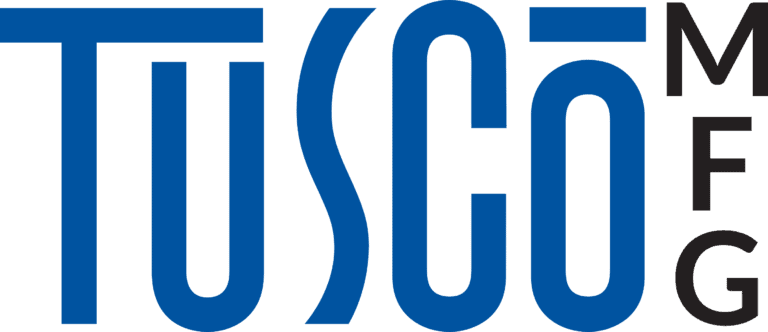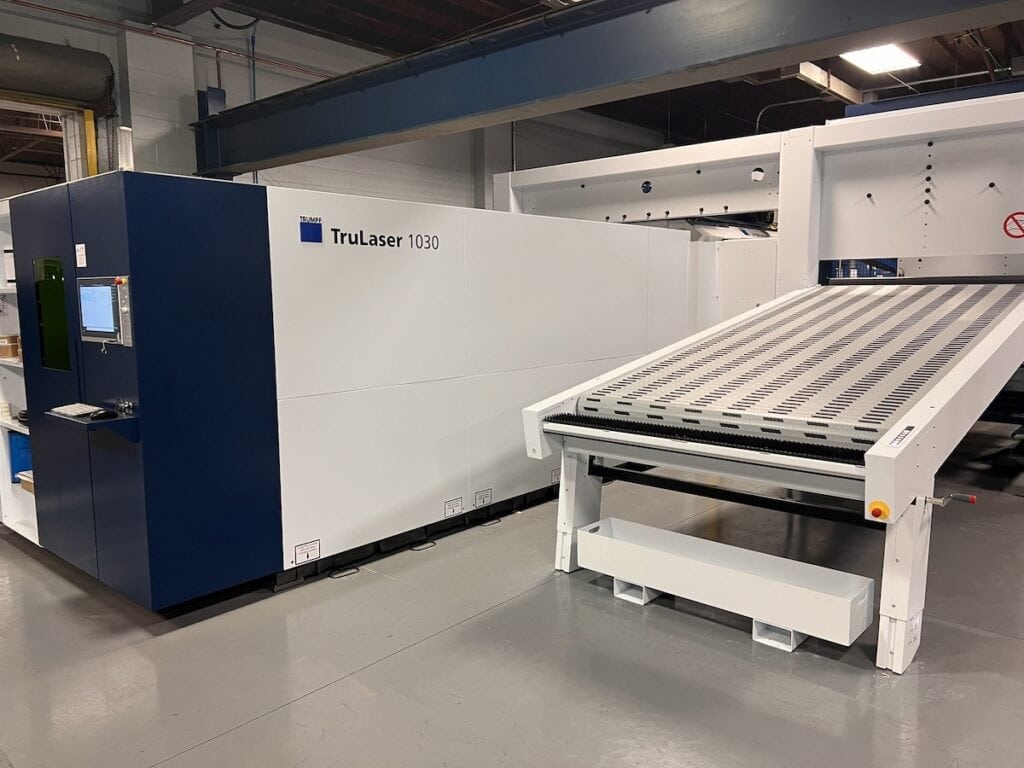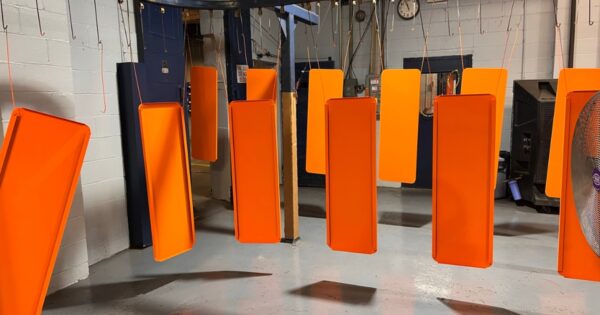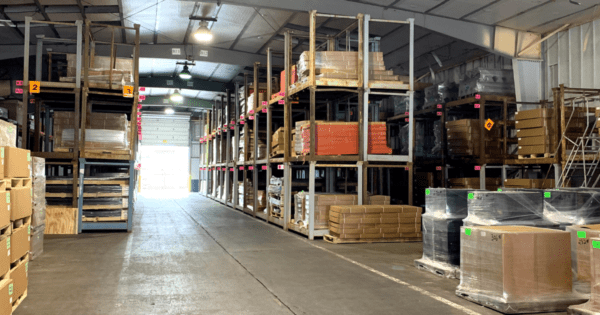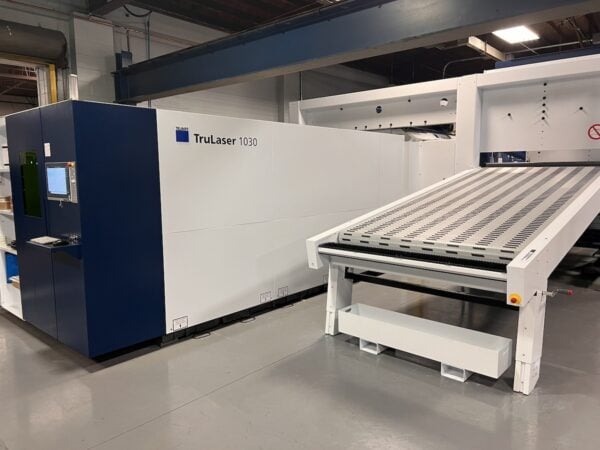Fiber laser cutters significantly advanced metal cutting, offering benefits of precision and speed not possible with traditional CO2 lasers or other cutting methods. Fiber laser cutting has a relatively recent history. However, the underlying technology goes back many decades. In fact, it has its roots in Einstein’s theoretical work. Here, we will trace the history of lasers from Einstein’s early theories to today’s modern fiber laser.
Einstein Lays the Groundwork
Albert Einstein’s work in 1916-1917 laid the groundwork for the invention of the laser. He described two crucial concepts: spontaneous emission and stimulated emission. Spontaneous emission explains how excited atoms naturally release light particles (photons) randomly. The direction of this photon is random, and its wavelength depends on the energy difference between the excited state and the ground state. Stimulated emission takes this a step further. He theorized that when struck by a photon of a specific energy, an excited atom can be stimulated to release another photon identical to the first. This creates a cascading effect, where a single photon can trigger an avalanche of identical photons, all traveling in the same direction and phase. While Einstein didn’t envision the laser’s applications, his theory of stimulated emission provided the fundamental principle that paved the way for this technology.
From MASER To LASER
Stimulated emission moved from the theoretical when it was observed by a German physicist in 1928, but there was no practical use for it at that time. Several decades later, in 1953, Charles Townes and Arthur Schawlow developed a device to generate stimulated emission at microwave frequencies, called microwave amplification by the stimulated emission of radiation (MASER). While much research was done with masers, the applications were limited. Townes and Schawlow were interested in extending maser action to the much shorter wavelengths of infrared or visible light.
In 1956, Columbia University graduate student Gordon Gould worked on using optical pumping (using light to raise the electrons from a lower energy state to a higher one) to excite a maser and discussed the idea with Townes. The following year, Gould theorized he could use mirrors to produce narrow, intense beams. When Gould described the concept in his notebook, he called it Light Amplification by Stimulated Emission of Radiation, which today we refer to as laser.
In 1960, Theodore Maiman at Hughes Research Laboratories achieved a breakthrough in laser development. He built the first functional laser using a synthetic ruby crystal and flashlamp illumination. This laser emitted a pulsed red light beam. Maiman’s success sparked a surge in research on different materials that could be used for lasers. Solid-state lasers, like those using ruby crystals or neodymium-doped yttrium aluminum garnet (Nd:YAG), became prominent. These lasers offered more power and control than the ruby laser but still had limitations. They were bulky, required complex cooling systems, and weren’t very efficient.
Birth of the CO2 Laser
Alongside solid-state lasers, gas lasers emerged. In 1963, Kumar Patel developed the first carbon dioxide (CO2) laser, which was more efficient and less costly than the ruby laser. Initially, while the CO2 laser was a significant scientific breakthrough, its power and efficiency were not powerful enough to cut through thick metal or materials like what are used in industrial applications today.
Technological advancements in laser power, beam quality and focal ability, control systems, gas flow dynamics, and optical components have collectively enabled CO2 lasers to become powerful tools for cutting metals. CO2 lasers are still widely used today, but in recent years, the focus has shifted to fiber laser cutting.
Fiber Lasers Emerge as a Powerful Cutting Tool
Fiber laser cutters have brought about a significant advancement in metal cutting, offering a range of advantages over traditional laser technologies, such as CO2 lasers. The groundwork for this advancement began in the early 1960s, when Elias Snitzer, often considered a pioneer in the field of fiber optics and lasers, worked on fiber optics and the theoretical and experimental foundations for fiber lasers.
Unlike the CO2 and solid-state lasers that preceded them, fiber lasers use an optical fiber doped with rare-earth elements such as erbium, ytterbium, neodymium, or dysprosium as their active medium. This technology emerged in the late 20th century, with significant developments occurring in the early 21st century.
The core advantage of fiber lasers lies in their design. The doped optical fibers serve as the laser medium, where the rare-earth elements amplify light. When pumped with a diode laser, these fibers produce a laser beam with exceptional quality and high efficiency at wavelengths that are ideally suited for cutting metals. This process is much more efficient than those used in traditional lasers, as the fiber’s structure allows for a higher absorption of the pump light, leading to less power loss and higher conversion efficiency.
The introduction of fiber lasers into the metal-cutting industry has led to significant improvements in cutting speed, precision, and energy efficiency. Fiber laser technology continues to evolve, with ongoing research and development focusing on increasing power output, improving beam quality, and expanding the range of materials that can be cut or processed. Manufacturers are continually exploring new applications and refining the technology to meet the growing demands of aerospace, automotive, and electronics manufacturing industries.
TuscoMFG’s Pursuit of New Technology
To stay at the forefront of manufacturing technology and enhance our production efficiency, TuscoMFG has recently acquired a state-of-the-art 6000-watt Trumpf fiber laser, taking a large step forward from our previous 2008 CO2 laser system.
The new system incorporates automation, allowing unmanned operation for up to an entire shift. This feature is a game-changer, enabling continuous production between shifts for up to 8 hours, a capacity previously not possible with our older equipment. The automation efficiently manages the exchange of cut sheets and raw materials, maintaining productivity without direct human supervision, adding to its efficiency.
Fiber lasers, as discussed, are inherently more efficient than their CO2 counterparts. However, what sets this new machine apart is not just its technology but the specific capabilities it brings to us. Capable of cutting materials from 22 gauge up to one-inch plate, the new laser offers increased flexibility in manufacturing operations. It’s designed to handle a wide range of metals—mild steel, stainless steel, aluminum, and galvanized steel—with a cut speed nearly three times faster than the older model. This increase in speed, coupled with the automation, has more than doubled our capacity, presenting opportunities to expand our work scope significantly.
Beyond raw performance, the Trumpf fiber laser stands out for its operational efficiencies and ease of use. It can operate using shop air for the cutting process, reducing costs associated with using nitrogen—a notable improvement that could lower production costs. The laser has a user-friendly touchscreen interface that simplifies operation. This ease of use extends to maintenance and troubleshooting, thanks to diagnostic tools and direct support from the manufacturer, ensuring high reliability and minimal downtime.
Choosing a Trumpf fiber laser cutter was not a decision taken lightly. After evaluating several brands and visiting numerous facilities, Trumpf’s reputation for reliability, speed, software, and comprehensive in-house development solidified our choice. The investment in the fiber laser cutter not only enhances our production capabilities but also positions us as a leader in precision manufacturing, ready to tackle complex projects with confidence.
Do you have a complex metal fabrication project? Contact us and see how our commitment to investing in new technology can make a difference.
